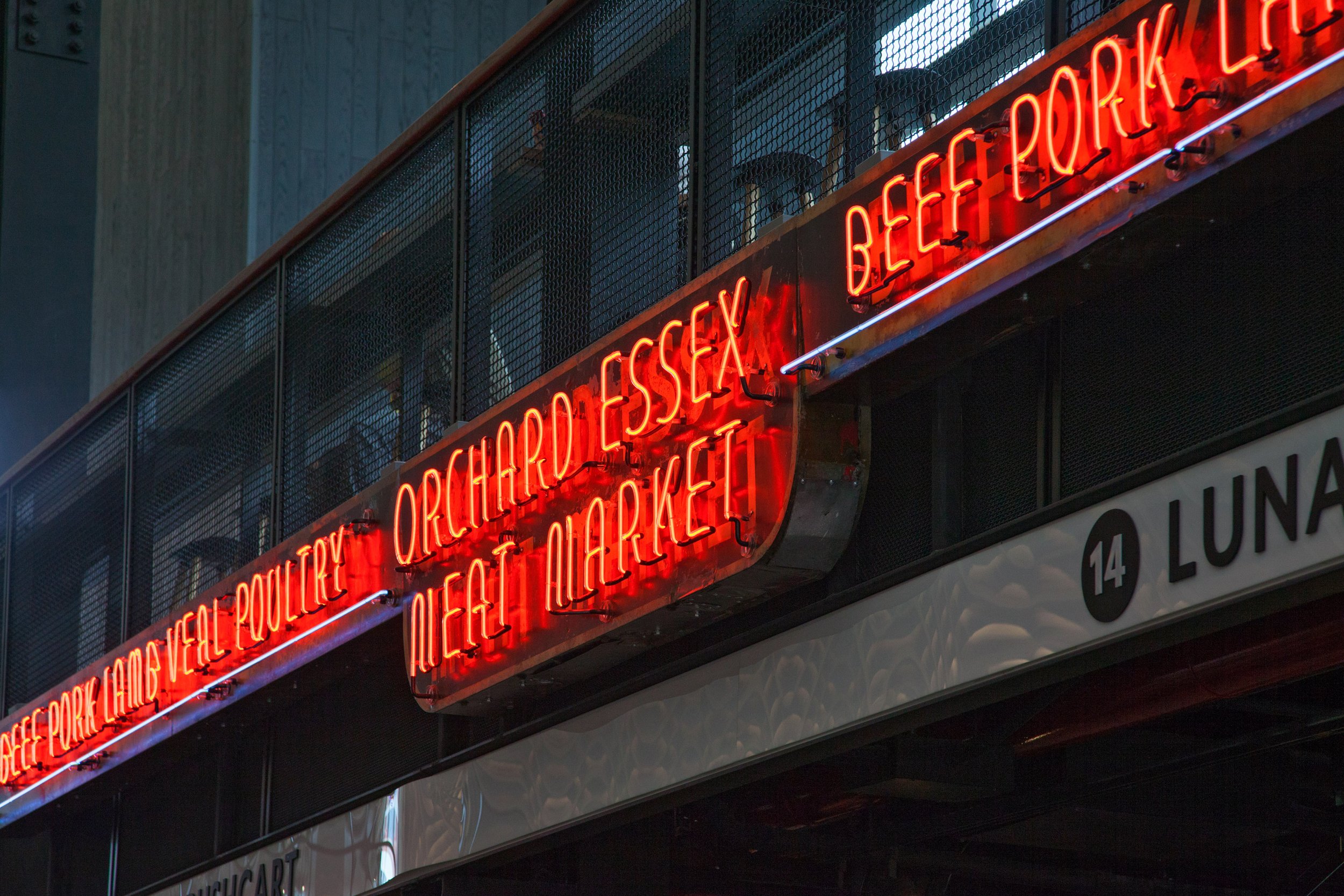
Story“A Vibrant Slice of Old New York”
– CURBED
Essex Market, nestled in the heart of the Lower East Side, embodies a legacy as rich and diverse as the neighborhood itself. For generations, it has been a symbol of community, offering a vibrant mix of local flavors and small businesses that reflect the dynamic spirit of its surroundings.
Read more about our story below, or learn more about the many programs we offer.
NYC Public Markets
Essex Market is the flagship of the Public Markets family. Since 1937, the Public Retail Markets of New York City have served as culinary gathering places for generations of New Yorkers.
Originally comprised of a ten-market system, these markets were constructed by the City to provide its citizens with an affordable supply of fresh food.
Today, six remaining markets serve as a thriving testament to the food history that enriches New York City.
From Pushcarts to Present-Day
Essex Market has been a fixture on the Lower East Side since 1818, when a market house was constructed on Grand Street between Essex and Ludlow Streets to serve the local community.
Pushcart Peddling on the Lower East Side
The Lower East Side was once a hub for independent pushcart peddlers and open-air markets. Peddlers rented pushcarts by the day and sold everything from potatoes and herring to hats. These vendors exemplified the bustling culture of open-air markets that existed in the urban immigrant communities of 19th century America.
1880sThe bustling Hester Street pushcart market photographed in 1903. (US National Archives, NAID: 3854683)
1940Mayor LaGuardia envisions a network of indoor municipal retail markets to house street vendors.
A surge of European immigrants in the mid-19th century and an abundance of pushcarts made for very crowded city streets. To ease congestion, LaGuardia planned a network of indoor public markets throughout the city including the Essex Street Municipal Market, which opened its doors on January 9, 1940.
With four buildings and 475 vendors, Essex Street Market’s early identity was largely shaped by the Lower East Side’s Jewish and Italian immigrants who served as both its vendors and the customers. The market quickly became a social environment where residents could connect and build community.
View from Delancey Street of the newly opened market in 1940. (NYC Municipal Archives)
Vendor permits helped transition from sprawling pushcarts to controlled market stands.
1950sNew Residents Join the Neighborhood
The 1950s marked one of the largest influxes of Puerto Rican migration to New York City. With the shift in neighborhood demographics, the market evolved to offer a wider variety of products, meeting the needs and desires of the Lower East Side’s newest residents.
During World War II’s food shortages, Essex Street Market became an important center for food education and cooking demonstrations.
A woman walks through the aisles of Essex Market in 1950. (AP Photo/Robert Kradin)
1960s-1980sThe economy takes a hit, and shoppers turn to big box supermarkets.
Compounded by economic decline and mass exodus towards the suburbs, shoppers turned to more convenient supermarkets. While some vendors remained open, many were forced to shutter.
After years of being run cooperatively by vendors, a 20-year lease expired in 1986, bringing change to the market once more.
Essex Street Market ca. 1970. The area at the time was a patchwork of overlapping identities and a neighborhood of burgeoning opportunity and to the many immigrant families that had settled there.
1995New York City Economic Development Corporation (NYCEDC) steps in to save the market from closure.
NYCEDC commenced a $1.5 million renovation of Essex Street Market, consolidating tenants scattered between LaGuardia-era buildings into one at 120 Essex Street. The renovation created the critical mass of vendors needed to save the market from closure, ushering in an era of growth and vitality.
A worker wraps bundles of vegetables at the market in the late 90s. Gone were the wooden pallets and newsprint wrapping paper of old, traded in favor of fluorescent lights and metallic shine reminiscent of the prevailing supermarkets.
2019In May 2019, Essex Market moved to a new home at the cornerstone of the Essex Crossing development project.
In May 2019, a larger, modern space for the vendors of the historic public market opened its doors right across from the original market site. Now coined ‘Essex Market’, this new home allowed a slew of new businesses to join the legacy vendors in the Essex Market family.
To this day Essex Market continues to be public, allowing vendors the same opportunity to continue serving residents—old and new—with affordable, fresh foods, and community programming.
The new facility photographed in 2023. It remains a bustling hub of community and fresh flavors.














